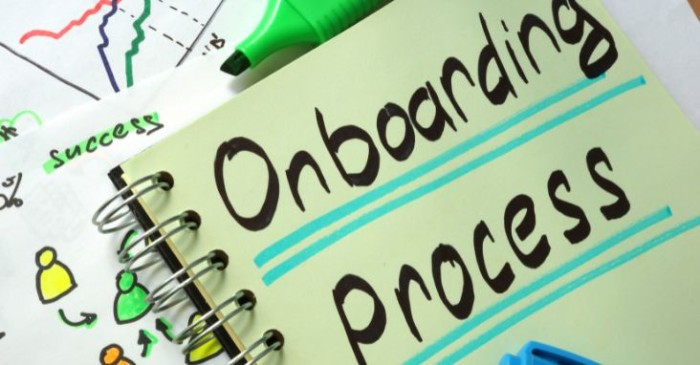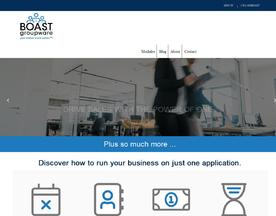What is sales onboarding? Sales onboarding is the process of introducing new salespeople to their company’s products, services, sales process and instills the company values. It provides them with the necessary resources to build customer relationships and make successful sales pitches.
Through a sales onboarding process, new team members learn about the inner workings of their organization as well as how to develop tactics for navigating their market. It also helps establish a clear sense of professional norms within their entire team and create an understanding of mutual expectations for how they should represent their employers and interact with customers. Sales onboarding is so important because it sets up the team for long-term success in acquiring customers and staying ahead of the competition.
What Is Sales Onboarding and Why Is Sales Onboarding Important?
Sales onboarding helps ensure that all of your sales reps and new sales reps have the necessary knowledge and skills to do their jobs effectively. When done properly, sales onboarding engages reps and enables them to reach sales goals. It also helps create a consistent experience for customers by making sure everyone has the same level of understanding when it comes to your product or service and how it works. Without proper onboarding, new reps may struggle with selling your product or service due to lack of product knowledge or understanding of processes, which can lead to missed opportunities and lost revenue.
When your new reps are in the early onboarding stages, having them base their learning on real prospects and clients will allow for a better understanding of your company’s target market, company’s sales processes and products.
In addition, effective onboarding sets up new hires for long-term success by instilling best practices from the start and helping them build relationships with other team members. This makes them feel more comfortable in their role and encourages collaboration between teams, leading to better results overall. Finally, effective onboarding makes new employees feel valued and appreciated by showing that you care about their success and are willing to invest in their development.

Benefits of Onboarding
Improved Employee Engagement
Sales onboarding helps employees feel more engaged with their work and understand what’s expected of them. This improved engagement leads to increased productivity and better results for the company.
Sales onboarding ensures an enhanced Customer Experience – the new sales team members have a thorough understanding of your product or service and how it can benefit customers, leading to improved customer satisfaction.
More Efficient Training Process
Sales onboarding helps streamline the sales training process by providing new team members with all of the necessary information in one comprehensive sales training program. This allows them to get up to speed quickly and reduces the need for additional ongoing training down the road. If you’re training new employees on the CRM system, for example, you might include activities such as “Create a new contact,” “Update call notes,” and “Mark prospect as qualified.” Use this onboarding checklist of activities to ensure your sales onboarding program covers all bases of your sales process.
Sales onboarding helps create a sense of belonging among new hires, which can lead to improved retention rates.
Greater Knowledge Retention
Sales onboarding ensures that a new team member has the knowledge and skills necessary to do their jobs effectively, resulting in greater knowledge retention over time. Also, it helps improve your company’s reputation.
Typical Onboarding Process
Pre-onboarding
During pre-onboarding, new hires receive information about their job roles and expectations from the sales manager. This is also the time to provide them with any necessary paperwork they need to complete before starting work.
Onboarding Day – On onboarding day, your team will introduce new employees to your company culture, processes, and policies.
Orientation
Orientation usually takes place over a few days and includes activities such as team building, system and product training, and interactive introductions with other team members.
Post-onboarding
Post-onboarding is the final phase of onboarding and consists of ongoing learning process opportunities to help new hires become more comfortable with their roles
Training Knowledge Assessment
Sales onboarding should include a knowledge assessment to measure how well new team members understand the product and service, and their ability to sell it. This helps ensure that they are prepared for their role and sets them up for long-term success.

Challenges of Onboarding
Developing Effective Onboarding Materials
Developing effective onboarding materials is an essential part of the employee orientation process. At their core, these materials serve to ensure that new hires have a smooth transition into their new roles and view the company in a positive light. By paying attention to detail and creating quality resources, organizations can craft onboarding documents that not only provide valuable information, but which also exemplify professionalism and demonstrate a commitment to helping employees become successful in their positions. Onboarding materials should include a strong overview of both the company and its expectations for new employees, as well as clear instructions on accessing all tools important to their job duties. Additionally, providing access to helpful links or FAQs regarding the organization’s policies can help further acquaint new hires with the inner workings of their workplace. Ultimately, with a carefully developed and maintained roster of onboarding materials, organizations can facilitate efficient assimilation while imparting information in a manner that is interesting, useful, and relatable.
Finding the Right Training Resources
To ensure sales teams hit the ground running, it’s important to identify the right onboarding resources. The first step is to assess the team’s training needs. What topics do they need to feel confident engaging in conversations with potential customers? What skills do they need to be comfortable pitching products and services? Once the gaps are identified, their next challenge is to find effective ways to fill them. Training methods should embrace adult learning principles such as offering high-impact activities to maintain attention and emphasize application of knowledge in a practical themed setting. As much as possible, use customized programs that focus on the needs of each new hire in order for them to transition smoothly into the work environment. With these considerations in mind, companies can find training resources that will help build a strong onboarding framework for their sales teams.
Establishing a Supportive Network
Sales onboarding should include team building activities, such as lunches and group meetings, to help new hires establish supportive relationships with their colleagues. This will help them feel more comfortable in their role and give them the support they need to succeed.
Analyzing & Refining The Process
Sales onboarding should be constantly monitored and improved over time to ensure that it is meeting the needs of your team. Regular feedback from new hires can be used to refine the program and ensure that it is delivering the desired results.

What Is Sales Onboarding? – Conclusion
Sales onboarding is an essential part of any business’s success strategy – especially when there are complex technologies or specialized skills involved. By providing new hires with comprehensive training, familiarizing them with company processes, introducing them to tools used in everyday work life, instilling best practices from the start, building relationships between existing team members and newcomers alike – companies can set up everyone for long-term success while creating a consistent customer experience across all channels at the same time.
Ultimately this leads to higher levels of employee engagement which directly translates into increased customer satisfaction and improved profitability of organizations over time. For those who may be overwhelmed by the prospect of setting up an effective sales onboarding program – don’t worry! There are many resources available online which can help guide you through every step of this process.















